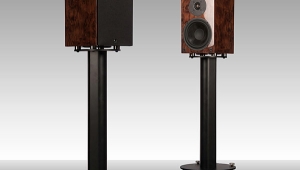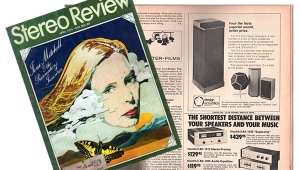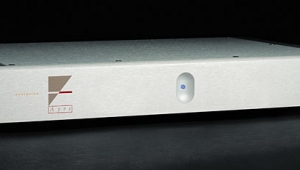| Columns Retired Columns & Blogs |
The Fifth Element #12
The subject was horses' fannies.
Footnote 1: Jonah is the editor of National Review Online. I often wonder what William F. Buckley, Jr. thinks of Jonah's frequent allusions to Star Trek, Budweiser, and low-budget movies.
You certainly are to be forgiven if you have jumped to the conclusion that Jonah Goldberg (footnote 1) and I were discussing Ted Turner and Alan Dershowitz, after consoling ourselves with overgenerous allotments of nature's amber-hued liquids. Strangely enough, that was not the case. (I'm not claiming that that has never happened, but it is a different horses'-fannies discussion I presently have in mind.)
Perhaps someone has forwarded to you the lengthy e-mail item that starts out by claiming that the U.S.-standard railroad-track gauge of 4' 8?" derived from the track width of the British-standard railroad car. British railroad-car track width in turn (so the story goes) was based on existing coal-mine tramways. That width came about because the tramway cars were supposed to have been built using the same jigs as roadgoing wagons and carts. Cart- and wagon-track widths had previously become roughly standardized so the vehicles would not break apart on rutted roads (footnote 2), some of which were Roman roads then still in use in Britain. Those Roman road ruts were made by Roman carts, which were designed to be pulled by a side-by-side two-horse team.
The punchline being that behind every engineering standard are at least a couple of horses' fannies. Ha ha.
Some versions of this story have Julius Caesar himself mandating the odd standard of 4' 8?" for "Roman war chariots." That is an anachronism. By Caesar's time, chariots were used almost entirely for sport and entertainment (footnote 3). The tale is based on established facts, but selective emphasis overstates the case. Yes, Stephenson-gauge rolling stock from Britain was imported into the United States in the early 1800s. No, for many years the U.S. did not have one standard railroad gauge. Indeed, one advantage that the Union had over the Confederate States was that in the North, gauge conflicts were usually between different regions, with the oddball gauges confined to places like Maine, while in the South, incompatible gauges often competed to serve the same important centers. After the North won, the South's destroyed rail beds were rebuilt to the Northern gauge.
Yes, 4' 8?" is not an intuitive width to choose. No, Julius Caesar had nothing to do with it. The standard track width started out from the eminently reasonable traditional cart-and-wagon track of about 5', and for all we know coal trams may have been built on coach jigs. But for rail use, you have to deduct the width of the two 2"-wide rails, which leaves 4' 8". Railroad pioneer George Stephenson then cannily added half an inch to allow for up to ?" out-of-trueness on each flanged wheel. Voilà. Caesar's ghost can now go back to sleep.
Rather than claiming that behind every engineering standard there lurk a couple of horses' fannies, I'd prefer to think that behind every engineering standard there probably is a good story, some of which might actually be true.
What set me wandering in this direction was my pondering the defiantly anti-trendy size and shape of Harbeth's top-of-the-line Monitor 40 loudspeaker ($6949/pair). The past several years have witnessed the development of many loudspeaker designs that seek to minimize their apparent bulk, while dispensing with the need for separate stands. The usual way this is done is to make a tall, narrow, but deep floorstanding column, with the tweeter and midrange at the top of the narrow front face, and the woofer or woofers on the deep side face. The first speaker with this configuration that I can recall seeing was the Audio Physic Virgo, a later version of which Michael Fremer reviewed in the September 1995 Stereophile (Vol.18 No.9).
I agree with Michael (and his water-heater repairman) that the Virgos excel at imaging, and that they really do not call attention to themselves as sound sources. Some of this, I am sure, is attributable to the narrowness of the Virgo's front baffle, which is only 6.3" wide. The woofers are positioned on either side of the cabinet's 16.3" depth, while the Virgo's height is almost 40". This is—to be sure—a nonintuitive shape. You can see why it took considerable time before someone puzzled it out.
In stark raving contrast, the shape and bulk of Harbeth's Monitor 40 are close to that of a standard two-drawer filing cabinet. Each speaker is 29.5" high by 17" wide by 15.75" deep, and weighs 86 lbs. Make that a standard two-drawer filing cabinet full of files. Separate and quite sturdy stands are most certainly required.
Footnote 1: Jonah is the editor of National Review Online. I often wonder what William F. Buckley, Jr. thinks of Jonah's frequent allusions to Star Trek, Budweiser, and low-budget movies.
Footnote 2: Circa 1912, the Ford Motor Company offered the Model T in a wide-track (60") "Dixie" version for use on rutted, unpaved Southern roads.
Footnote 3: The best debunking of this urban legend is found at this website.
- Log in or register to post comments




































